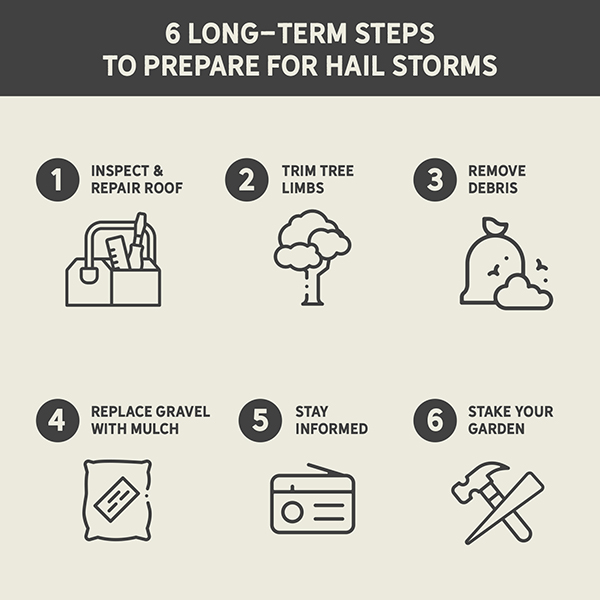

How to Prepare for a Hailstorm
We have seen our fair share of wild weather and with Summer ramping up, storms can turn big quickly with hail and wind. While hailstorms can happen at any time of year, they are most common in McCoy’s states from March to May. In fact, at least two or three hailstorms each spring are typical here. Unfortunately, while there’s no preventing them, you can learn the signs and prevent and prepare for the damage they can cause.
What Causes a Hailstorm?
Hail occurs in fierce thunderstorms that have updrafts so strong that raindrops are quickly pulled up into very cold areas of the atmosphere, where they freeze. As they begin to fall back toward the ground, they become larger as they collide with other raindrops that freeze onto the hailstone’s surface.
Hailstorms can happen at any time of day, but they tend to occur in the late afternoon. While they typically only last about 15 minutes, they can do a lot of damage in that short window.
How Can I Tell A Hailstorm is Coming?
Any thunderstorm, particularly at this time of year when the earth is heating up and the atmosphere is cool, can produce hail. Your best bet is to stay up to date with weather reports and consider investing in a weather radio. In some localities, you can sign up for weather alerts on your cell phone. Some areas also have thunderstorm sirens.
Even if there are no alerts or sirens in your area, there are natural signs that a hailstorm may be on its way. These include a sudden drop in temperature on an otherwise warm day. Distant rumbling and very tall clouds are also typical signs of an approaching storm that could contain hail.
How Can I Prepare My Home for A Hailstorm?
There are longer-term projects you can undertake to help prevent damage to your home from strong wind and hail, as well as quick steps you can take if time permits before a hailstorm hits.

6 Long-term Steps to Prepare for a Hailstorm
- Inspect your roof in early spring and repair any loosened or damaged shingles or tiles. If you’re replacing your roof, choose impact-resisting shingles.
- Use loppers to trim shrubs and dead or damaged tree branches that can easily break and cause further damage.
- Remove any debris on your property that could become airborne during a hailstorm and fall on your home.
- Replace gravel ground cover with shredded bark or mulch. These lighter materials may blow around more during a storm, but they are unlikely to cause any damage the way flying gravel might.
- Invest in a weather radio and sign up for alerts so you can be forewarned about approaching storms.
- Place tall stakes around your garden bed and purchase tarps and plastic bucket to protect your plants.

6 Short-Term Steps to Prepare for a Hailstorm
- Stow all patio furniture or anything movable that’s on your property. Not only can outdoor furniture get damaged, but it can be blown into your home, causing further harm.
- Bring potted or hanging plants inside or to a sheltered area. Tender houseplants are susceptible to hail damage.
- Shelter your animals and pets. While hail is unlikely to kill a larger animal, pets and livestock of any size can be injured by large hailstones.
- Park your vehicles in a protected area and use an impact-resisting windshield cover if possible, to reduce the number of dings.
- Protect your garden by mounding extra soil around the base of your plants. If you have placed stakes around your garden beds, cover stakes with tarps and tie them down. You can cover individual plants with buckets or plywood teepees if you can stake them down to ensure they don’t blow away.
- Stay inside with family members, preferably in a windowless room, with your windows closed and the blinds and shutters drawn to protect from broken glass until the storm has passed.
Be Patient During a Hailstorm
Don’t be tempted to go outside during the storm. Getting pelted with hail can be pretty painful, and flying debris is even more dangerous. If you are in your car when a hailstorm strikes, pull over in a safe area to wait it out. The forward motion of your vehicle increases the impact of hail and makes damage to your windshield more likely.
After the storm, inspect for damage right away and take photos of anything you find to document the amount of damage for insurance purposes. If there is any damage, make only emergency repairs to ensure your home is weathertight before filing a claim with your insurance agent. This is the best way to make sure your repair costs are covered by your insurance company. Find out more details about what to do after hail hits in this article.
